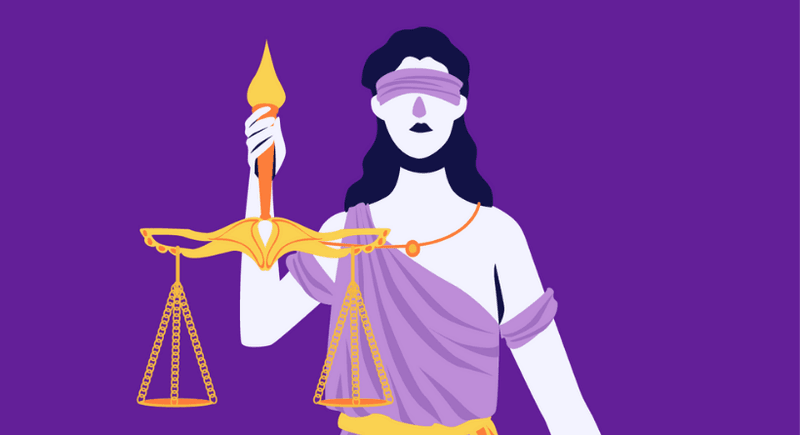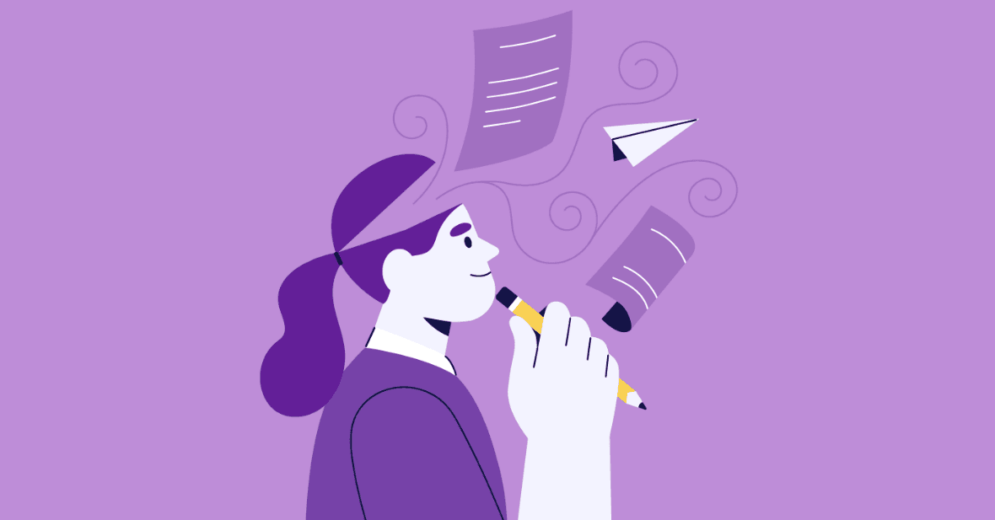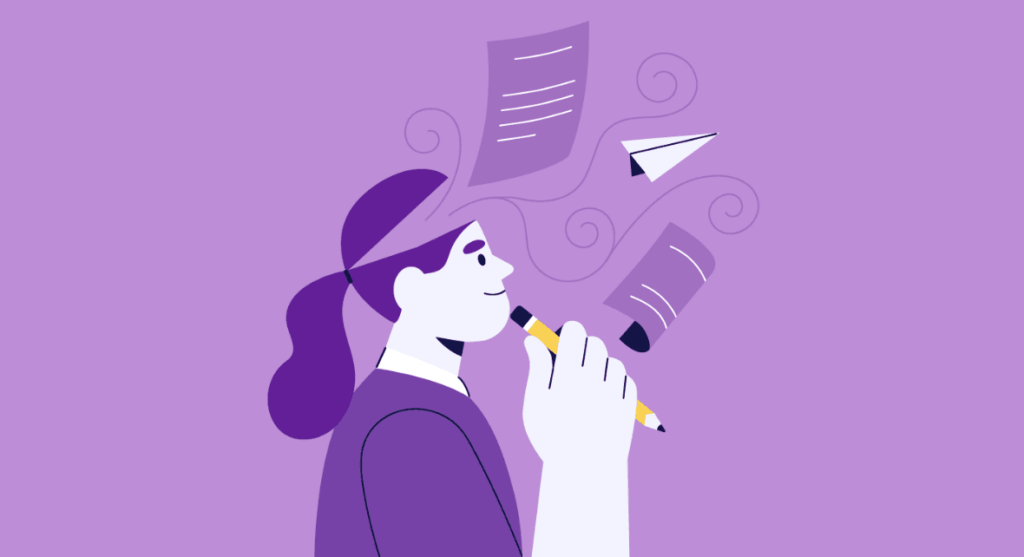It's a classic situation: you're feeling unsatisfied with your current career and are looking for a change in your life.
After researching a bit, you're considering the field of UX Design, which is a promising career path and an exciting prospect to explore.
But then some issues arise: do I need a background in Design to transition? Do I need to have any skills to excel in UX? I'm not cut out for this, I come from a different background.
Relax! There's no need to panic. After all, these doubts are normal for anyone wanting to start a UX Design career.
In this article, we'll show that every background can be useful in UX Design and that experiences in other areas don't make it impossible to change careers. On the contrary, they can even help you!
Shall we get started?
Breaking a myth: You don't need a design background to transition to UX
First and foremost, it's important to clarify this issue. You don't need a design background to transition to UX.
In fact, there are several studies conducted with companies and their UX teams that prove the importance of a diverse background when it comes to UX design.
One study conducted by InVision showed that team managers prefer professionals with different backgrounds. The preferences are mainly in product management, engineering, business, marketing, and psychology.

Moreover, many of our Mastering Interface Design program students come from non-Design backgrounds, bringing diverse skills and experiences. Here are some examples:
- From Marketing to UX/UI Design – Interview with André Borges
- Biology to UX Design – Interview with Lívia Assunção
- Civil Engineering to UX Design – Interview with Leonardo Andrade
Therefore, it's important to dispel the myth that background is a determining factor and to understand that switching to UX depends much more on your willingness and persistence than on your previous profession.
Reading tip: Check other interviews with our students!
How can I use my background to my advantage?
We've already established that having a design background is not a prerequisite for transitioning to UX.
And what's even more exciting is that experiences and skills acquired from various fields can prove to be valuable assets in UX design.
So, don't worry. Pursuing a different career path does not mean throwing away the last years of your life.
In fact, different perspectives and diverse skills can enrich the practice of UX design.
We have highlighted a few examples of fields that significantly overlap with UX design.
Business Administration
A background in Business Administration is useful for almost any profession, including UX.
UX Design is no longer a field where professionals work isolated, solely focused on their own work, without considering other areas and the company as a whole.
The great thing about Business is that you view the company as a whole, considering other aspects like finance, marketing, sales, and costs.
Therefore, this can be an excellent background to bring a business mindset into UX Design.
At the end of the day, the products developed need to be economically viable for both the consumer and the company. For this reason, it's interesting to possess knowledge in administration when pivoting to UX Design, as you can understand the company's goals and objectives and translate them into your projects.
Reading tip: How Product Design Impacts Business
Sales and business development

Some say that knowing how to sell your product is the most important part of any company. In fact, having the best product in the world won't do any good if you can't sell it.
Those with a background in sales usually have good presentation skills, communication skills, and good negotiation and persuasion techniques.
But why are these skills important when pivoting to a UX Design career?
Although the designer is not responsible for sales, they are the person who will sell this project to their internal clients, directors, and other stakeholders.
Therefore, presentation and persuasion techniques are essential. Selling your project internally is just as important as selling to the end user.
In addition, communication skills are essential when conducting research with users and even maintaining good relationships with other departments.
Also, people who have worked in sales are used to focusing on goals, as many salespeople work on a commission system.
That's why having a background in sales has a lot to offer to UX Design.
Reading tip: Scrum: Organize, Collaborate, Iterate
Psychology
There are so many concepts from psychology used in UX Design that it's even strange to say that the two areas are different. But, despite this, a person with a degree in psychology may still be hesitant to transition to UX, not knowing how to use their skills in this profession.
UX Design revolves around the concept of User-Centered Design. This concept basically puts the user at the center of all design decisions.
Thus, there is a priority in understanding who the product user is, what they think, and how they act and behave.
It is because of psychology that it is possible to understand the user and to be able to develop products that communicate with them and allow their experience to be unique and their problems solved.
Psychology helps to understand the user's emotions, their memory, and their perception.
Our student, Inis, felt the importance of her background in psychology:
"… then I came to understand in other experiences that my background didn't matter so much, and that, in fact, in the foreign market, knowledge in psychology is very valuable."
Reading tip: The Importance of Psychology in UX Design
Law

When we say that any background is important, we are serious about it. At first, saying that a Law degree can help you transition to UX Design and your new career may be far-fetched.
After all, it's not just about the technical skills of a professional, but their behavioral skills.
Our student Maria Resende is a Law graduate who managed to transition to UX and recognizes the importance of two skills she acquired in her initial education: Empathy and reading a lot.
Maria reports that as a lawyer, she learned to have a lot of empathy for her clients. And this skill is crucial in UX Design. Since the user is the center, it's important to be able to put oneself in their shoes and understand their needs and difficulties to create something truly valuable.
In addition, the field of UX Design has a lot of theoretical and technical reading material. So Maria tells us that the difficulty of reading was easily overcome given her background, in which she had to read numerous books and legal concepts.
Advertising and Marketing
Professionals coming from Advertising and Marketing also have skills that can help transition to UX Design.
Advertisers are often skilled in generating multiple ideas and being able to let go of them when necessary.
As our student, Luka Vasconcelos, notes, an important skill she developed in her background was the ability to detach from her ideas.
"I think a lot of letting go of ideas – if I created a solution that I thought was super cool and someone said no, that's fine. Let's rethink and understand how we can improve this creation. That was something very important that advertising taught me."
In the daily routine of a designer, ideas are often discussed, and at times, certain ideas must be discarded or improved.
Thus, it is crucial that the professional has the ability to detach from their ideas, as the ultimate goal is to develop high-quality products that benefit both the user and the company.
This is where the background in advertising, with its emphasis on creation and the handling of diverse ideas, can prove to be a valuable asset in UX Design.
Graphic Design

Certainly, Graphic Design is the profession that is closest to UX Design. It's no wonder that so many graphic designers transition to UX.
The benefit of having worked in Graphic Design is already having a lot of familiarity with the various concepts and terms that exist in UX Design.
Moreover, it's quite common for graphic designers to have worked with interfaces and wireframe development. As well as the use of software and programs also used in UX, such as Photoshop, Adobe XD, and Figma.
Thus, those with a background in Graphic Design already have some solid theoretical knowledge, which makes the transition to UX Design less laborious.
"I realized that I had to learn how to think like a UX Designer because I was still very focused on finding an entirely visual solution." – Diogo Crovador, MID student.
"As time passed—we founded the company ten years ago—I felt the need to evolve in my career and learn new things. I was eager to get product experience, a type of work I was not doing in my studio. As soon as I decided, I came across the UX field and decided to pivot to UX Design." – Leonardo Spolador, MID student.
Architecture
People with a background in architecture also have knowledge in common with UX Design.
They are already used to working with projects that involve research, ideation, prototyping, and testing, all based on the client's briefing and needs.
Additionally, architects usually work with other professionals such as carpenters, builders, plumbers, and electricians.
Therefore, architects already know how to work in teams, keeping in mind the results they want to achieve.
In UX Design, you also work with a multidisciplinary team; managing each activity to obtain the expected result is essential.
Writing

We have already seen that communication skills are quite important in UX Design. However, written communication is also essential!
If you have a degree in Literature or work as a copywriter and want to transition to UX, know that your word skills are important in product development.
In UX Design, there is a field of expertise called UX Writing. This specialty is responsible for integrating UX Design, Copywriting, and Branding.
That is, the UX Writer must ensure that all the text encountered by the user during their journey helps them have a good user experience.
Therefore, people who have writing skills can use this aptitude to transition to UX Design. It may seem like a trivial skill, but writing is fundamental to developing projects in UX.
Reading tip: UX Design: What Are the Possibilities for Working in the Field?
Soft Skills: essential behavioral skills for transitioning to UX
In addition to the technical skills coming from various different backgrounds, it is important to highlight the importance of behavioral skills – Soft Skills.
These skills are usually developed throughout our lives. Check a few essential soft skills in UX Design:
Good communication
We have seen that good communication is important for selling your design projects. But knowing how to deal with your team and other people involved in the project and the company is also very important.
Good communication is essential to promote a clear understanding of the processes and project objectives.
Remember that communication involves both speaking and listening. For a UX Designer, knowing how to listen to users and other colleagues from other teams is essential.
Detachment
It is quite common, in creative processes, to become attached to our ideas. But in UX Design, what matters most is the user experience.
Therefore, ideas can come and go, be criticized, and modified. Therefore, it is important to develop a mindset of detachment and understand that some ideas may not actually work for a particular project.
Detachment is a Soft Skill that is difficult to internalize, as it is directly related to our ego and our vision of our own work. However, it is something that needs to be practiced in your daily routine.
Teamwork
Working in a team means knowing how to work with different profiles of people.
Any work team is formed by different professionals with different skills and diverse backgrounds, and this diversity is even greater in UX Design. Therefore, knowing how to work in a team is fundamental for the group's harmony.
A cohesive group that can work together is much more efficient than a group that does not know how to manage its conflicts and activities.
That's why working in a team is one of the most important Soft Skills.
Reading tip: 9 Soft Skills to Stand Out as a Designer
How to identify skills in my background that can help me switch to UX?
Throughout this article, we have seen several skills from different backgrounds that can help you transition to UX Design. However, you may still have doubts about which skills you could leverage in UX.
Our tip is for you to start researching more about UX Design and the work involved in this profession. Understanding what a UX Designer does is essential to relate this work to your current skills.
Our website has several articles talking about UX Design, digital design, and careers. Also, recognizing your own skills requires a lot of reflection. Stop and think about the projects you have done and the challenges you have overcome.
This is a way to identify some of your skills, especially the behavioral ones.
But remember: you don't need a specific background in any area to transition to UX/UI Design. This transition to UX is not limited to the number of skills you can relate to your background. The essence relies on study, willingness, and dedication to projects.








